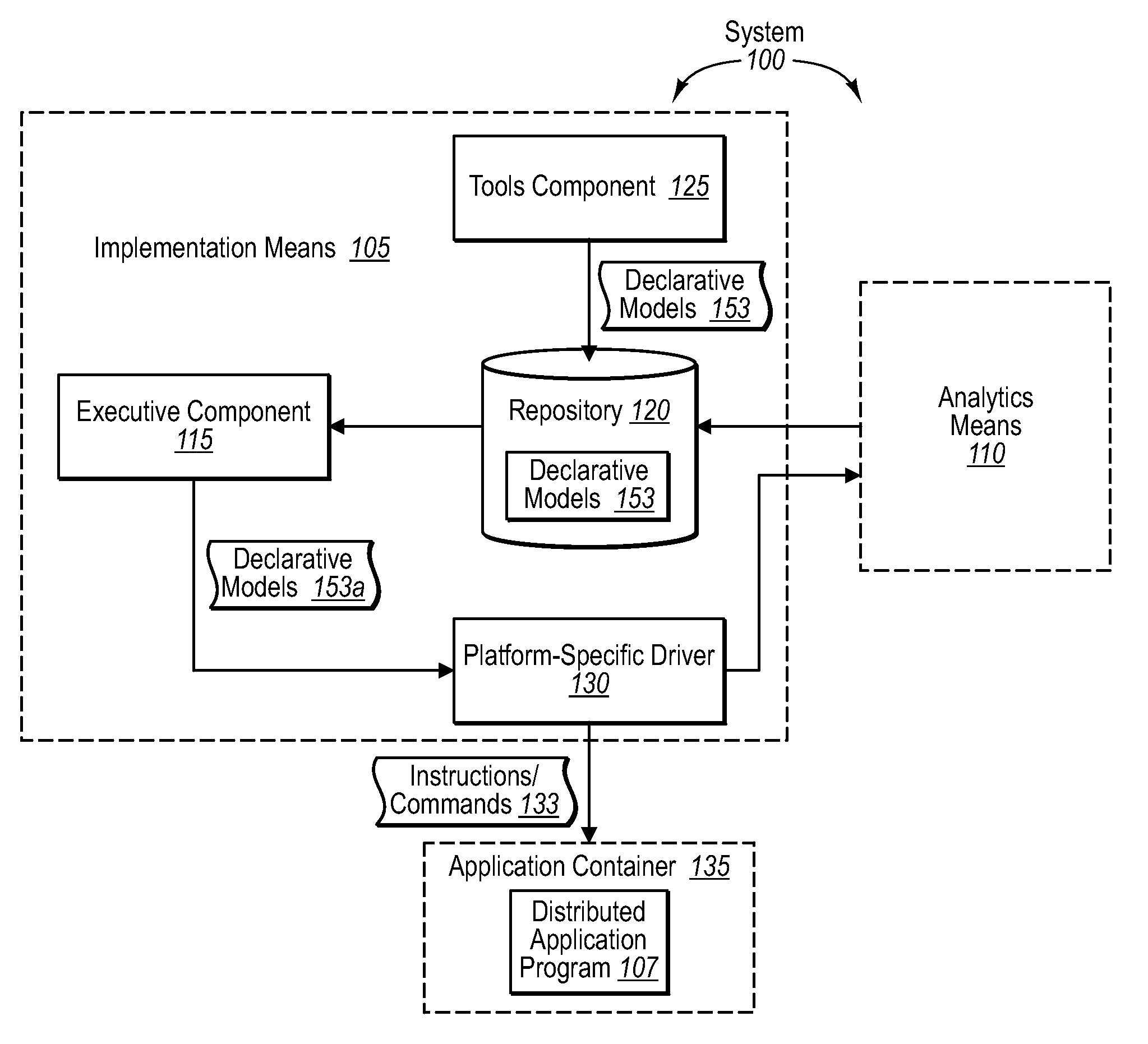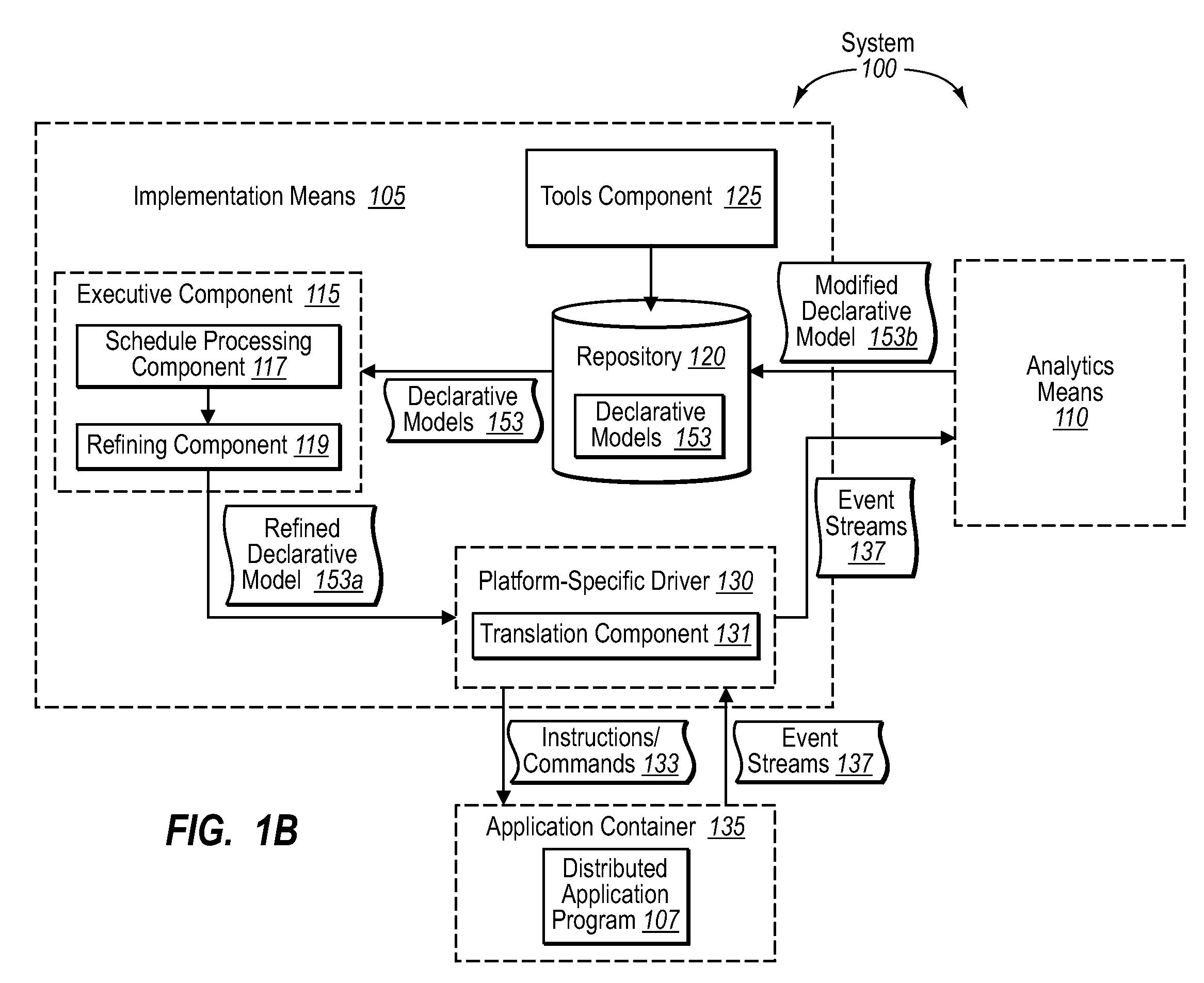Progressively implementing declarative models in distributed systems
a distributed system and declarative model technology, applied in the field of progressively implementing declarative models in distributed systems, can solve the problems of inefficient operation of hardware systems, complex software and hardware employed in such systems, and the need for seemingly more complex software continues to grow
- Summary
- Abstract
- Description
- Claims
- Application Information
AI Technical Summary
Benefits of technology
Problems solved by technology
Method used
Image
Examples
Embodiment Construction
[0021]Implementations of the present invention extend to systems, methods, and computer program products configured to automatically implement operations of distributed application programs through a distributed application program server. In at least one implementation, for example, a distributed application program server comprises a set of implementation means and a set of analytics means. Through a platform-specific driver for each given module of a distributed application program, the implementation means deploy sets of high-level instructions, or declarative models, to create a given distributed application program module on the respective platform, while the analytics means automatically monitor and adjust the declarative models, as needed. This loose coupling through the declarative models of server components to the distributed application program and automatic monitoring and adjustment can allow the server to better manage demand, resource, or usage spikes, and / or other fo...
PUM
 Login to View More
Login to View More Abstract
Description
Claims
Application Information
 Login to View More
Login to View More - R&D
- Intellectual Property
- Life Sciences
- Materials
- Tech Scout
- Unparalleled Data Quality
- Higher Quality Content
- 60% Fewer Hallucinations
Browse by: Latest US Patents, China's latest patents, Technical Efficacy Thesaurus, Application Domain, Technology Topic, Popular Technical Reports.
© 2025 PatSnap. All rights reserved.Legal|Privacy policy|Modern Slavery Act Transparency Statement|Sitemap|About US| Contact US: help@patsnap.com



